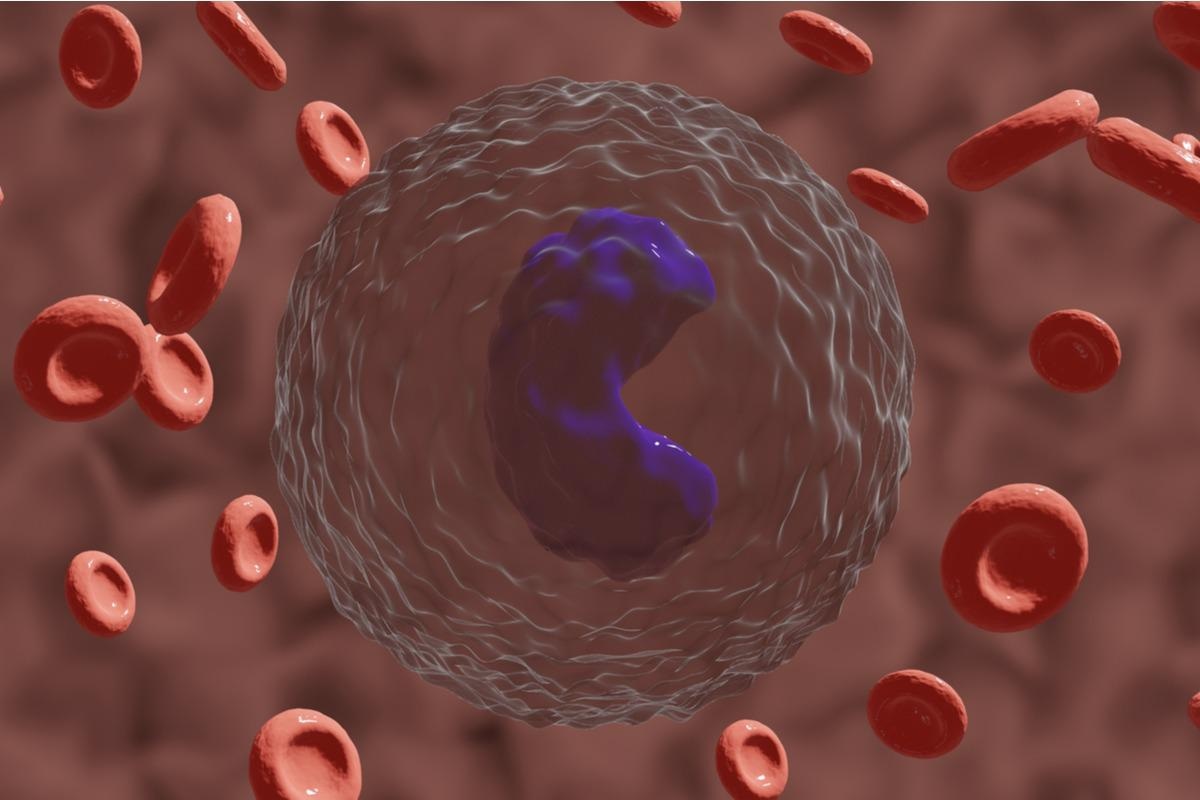Home » Health News »
Study determines the molecular signatures of monocytes and regulatory T cells in the circulating blood of COVID-19 patients
In a recent study posted to the bioRxiv* preprint server, researchers examined the unique clusters of monocytes and regulatory T (Treg) cells in the circulating blood from convalescent coronavirus disease 2019 (COVID-19) patients over a prolonged period after recovery, using single-cell RNA (scRNA) sequencing.

Background
An initial episode of severe COVID-19 later manifests as a diverse group of post-infectious syndromes, informally referred to as 'long COVID'. In addition, COVID-19 induces long-term changes in the immune system and high amounts of inflammation. While previous studies have extensively examined the immune response to severe acute respiratory syndrome coronavirus 2 (SARS-CoV-2) during the active disease phase, its long-term impact after recovery remains largely unknown.
Initially, after SARS-CoV-2 infection, both the virus-experienced, such as the memory T and B cells and naïve cells, circulate in the peripheral bloodstream; however, as the patient recovers, the cellular pool is dominated by long-lived lymphocytes and tissue-resident macrophages. Therefore, characterizing these cells could help evaluate how long these unique clusters of dysregulated immune cell phenotypes and molecular signatures due to infection persist after full recovery.
About the study
In the present study, researchers characterized the multi-omic single-cell level profiles of circulating immune cells in the peripheral bloodstream of patients.
The team enrolled 100 convalescent COVID-19 patients for the study analysis at least three weeks after their full recovery for the cellular immunity profiling. Additionally, they measured the SARS-CoV-2 receptor-binding domain (RBD)-specific immunoglobulin G (IgG) antibodies in each patient's sera to confirm their SARS-CoV-2 history.
There were five patient groups based on COVID-19 severity, including one seronegative healthy control group, as follows: i) asymptomatic with detectable RBD-IgG, ii) outpatients with mild symptoms and detectable RBD-IgG, and iii) two subgroups of hospitalized patients – admitted to the intensive care unit (ICU) and the non-ICU group.
The researchers identified monocytes and Treg clusters by cellular expression of cluster of differentiation 14 (CD14), CD16, forkhead box P3 (FOXP3), and α chain of the high-affinity interleukin (IL)-2 receptor (CD25), split and analyzed them separately. They used the Wilcoxon signed-rank tests to identify and compare differences between a subgroup and the overall population or between two subgroups.
Study findings
The flow cytometry analysis revealed that the short-lived monocyte and Treg populations were not only persistent in convalescent COVID-19 patients but displayed a dynamic association with disease severity.
The authors observed an elevation in the interferon (IFN) responsive gene expression in the asymptomatic patient group. The study findings confirmed this dynamic association of IFN response with COVID-19 severity sustained after full recovery. Further longitudinal analysis showed that the elevated IFN responsive gene expression in monocytes could continue beyond four months, exceeding the study duration.
Likewise, the study demonstrated that the human leukocyte antigen (HLA) expression on myeloid cells (another COVID-19 associated immune signature induced by virus-induced inflammatory cytokines) was sustained after COVID-19 recovery beyond the active phase of infection.
Tregs play a critical role in protecting against tissue injury during microbial infections, including SARS-CoV-2. The authors observed an increased Treg cell frequency in COVID-19 patients with milder disease and no such increase in the ICU patients compared to seronegative healthy controls.
The single-cell transcriptome analysis identified 10 unique clusters of Treg populations, reinforcing the highly heterogeneous nature of these cell populations, with or without microbial infection. Of these clusters, a Treg population cluster T4_KLF2_TGFB1, characterized by elevated expression of transforming growth factor-beta (TGF-β) and Krüppel-like Factor 2 (KLF2), was only present in some hospitalized (ICU) patients.
Although its clinical significance is unclear, the authors observed that the upregulation of both TGF-β and KLF2 was sustained only during the first three months and non-existent after four months of full recovery, suggesting a possible role of TGF-β in COVID-19 pathogenesis and recovery.
Conclusions
Taken together, the sc-RNA seq analysis revealed dynamically altered seven clusters of monocytes (M0-M6) and 10 clusters of Treg (T0-T9) with unique molecular signatures after the COVID-19 recovery, all varying with COVID-19 severity.
The control and outpatient groups had several common monocytes and Treg clusters, with high expression of HLA genes. The monocyte and Treg clusters displaying an elevated expression of IFN-responsive genes were abundant in the asymptomatic group of patients.
The authors recommended that future studies present a more detailed analysis of dynamically changing Treg frequencies and their COVID-19-associated molecular signatures throughout the active infection phase to the recovery phase.
*Important notice
bioRxiv publishes preliminary scientific reports that are not peer-reviewed and, therefore, should not be regarded as conclusive, guide clinical practice/health-related behavior, or treated as established information.
- Hoffmann, A. et al. (2022) "Unique molecular signatures sustained in circulating monocytes and regulatory T cells in Convalescent COVID-19 patients". bioRxiv. doi: 10.1101/2022.03.26.485922. https://www.biorxiv.org/content/10.1101/2022.03.26.485922v1
Posted in: Medical Science News | Medical Research News | Disease/Infection News
Tags: Antibodies, Antigen, Blood, Cell, Coronavirus, Coronavirus Disease COVID-19, covid-19, Cytokines, Cytometry, Flow Cytometry, Frequency, Gene, Gene Expression, Genes, Growth Factor, Human Leukocyte Antigen, Immune Response, Immune System, immunity, Immunoglobulin, Inflammation, Intensive Care, Interferon, Interleukin, Leukocyte, Monocyte, Receptor, Respiratory, RNA, SARS, SARS-CoV-2, Severe Acute Respiratory, Severe Acute Respiratory Syndrome, Syndrome, Virus

Written by
Neha Mathur
Neha is a digital marketing professional based in Gurugram, India. She has a Master’s degree from the University of Rajasthan with a specialization in Biotechnology in 2008. She has experience in pre-clinical research as part of her research project in The Department of Toxicology at the prestigious Central Drug Research Institute (CDRI), Lucknow, India. She also holds a certification in C++ programming.
Source: Read Full Article



